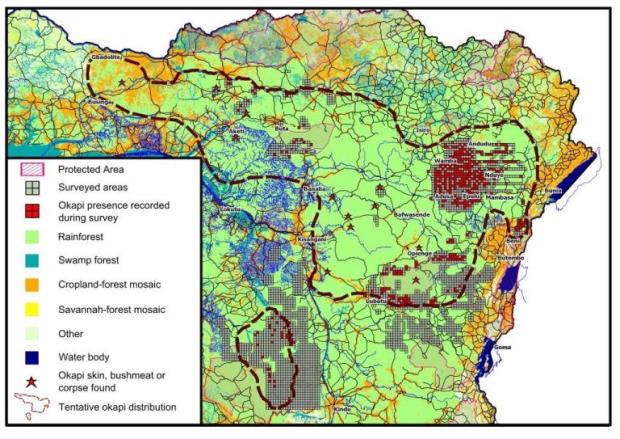In 2013, the GOSG completed an IUCN Red List re-assessment of the okapi, which is now listed as ‘Endangered’. Information on threats faced by the okapi is given under the ‘Threats’ section. As relatively little is known about okapi biology or ecology, it is difficult to know how these threats impact on the okapi. What we do know is that okapi populations are declining, with surveys in the Okapi Wildlife Reserve (RFO) showing an important decline in okapi dung densities in 1995-2007, and patrol reports suggesting a further decline from 2008-2013.
A range of current conservation and research projects are being conducted by GOSG members to understand and counteract the factors contributing to this decline, and there is significant scope and need for future research on a broad range of okapi conservation issues.
The most important conservation requirements for the okapi, as laid out in the conservation strategy, are:
- From now until 2023, viable populations of okapi are effectively protected, threats are reduced and populations are stable or increasing, in relation to the baseline data
- Ex situ populations of okapi are managed to maximise their benefit to the conservation of wild okapi
The lack of research undertaken on okapi conservation to date means there is significant scope and need for research on a range of okapi conservation issues.








